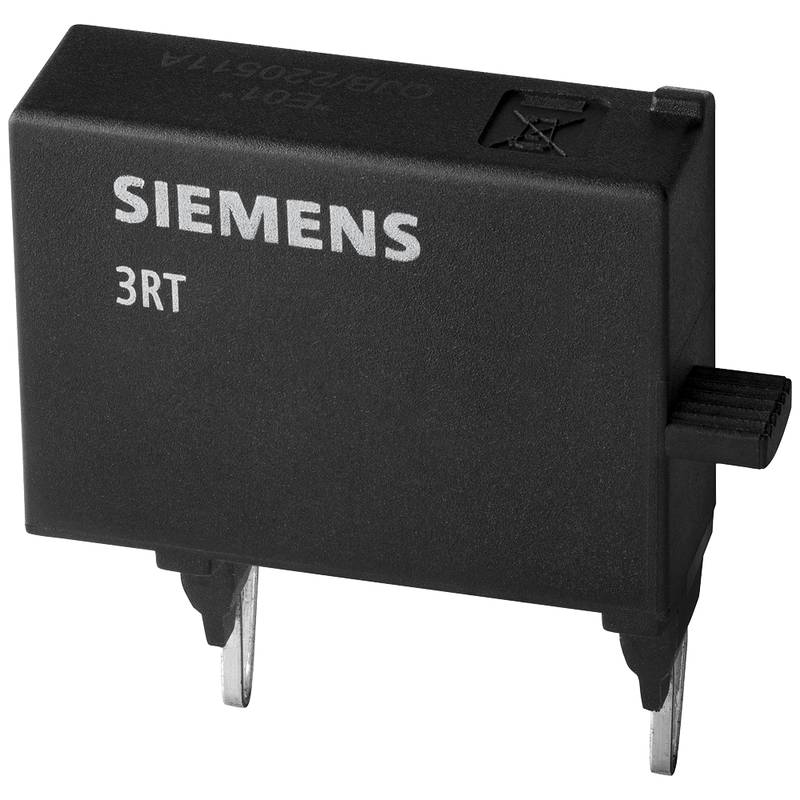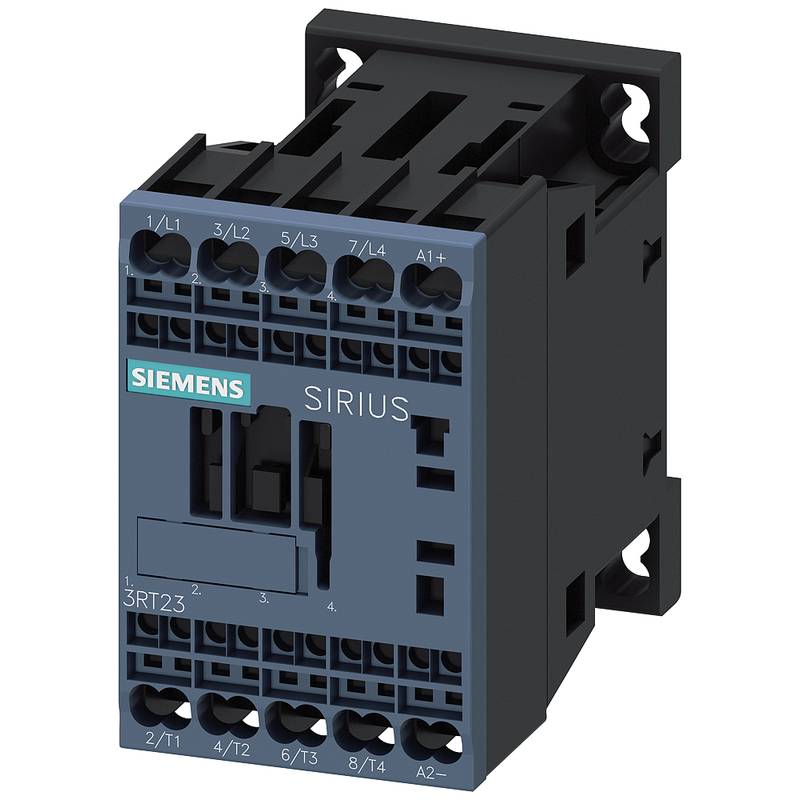
The Siemens 5SY6201-7CC is a high-performance, 2-pole, 1 Amp Miniature Circuit Breaker (MCB) designed for robust protection in diverse electrical systems. Engineered within Siemens' reputable SENTRON portfolio, this MCB offers essential safety and reliability, safeguarding circuits against overcurrents and short circuits. Its compact design and C-curve tripping characteristic make it suitable for a wide array of applications, ensuring operational continuity and device protection.
Product Specifications
| Specification | Value |
| :---------------------------------- | :--------------------------- |
| Manufacturer | Siemens |
| Product Series | SENTRON 5SY |
| Model Number | 5SY6201-7CC |
| Number of Poles | 2 |
| Rated Current (In) | 1 A |
| Tripping Characteristic | C |
| Rated Voltage (AC) | 400 V |
| Breaking Capacity (IEC 60898-1) | 6 kA |
| Breaking Capacity (IEC 60947-2) | 30 kA |
| Energy Limitation Class | 3 |
| Installation Type | DIN Rail Mountable |
| Dimensions (D) | 70 mm |
| Protection Class (connected) | IP20 |
| Mechanical Service Life | 10,000 operating cycles |
| Overvoltage Category | III |
| Degree of Pollution | 3 |
| Ambient Temperature Operating Range | -25 to 55°C |
| Terminal Type | Screw Terminals |
| Color | White/Grey |
| Halogen-free | Yes |
| Sealable | Yes |
| Silicon-free | Yes |
| Installable Supplementary Devices | Yes |
Core Features & Market Positioning
The Siemens 5SY6201-7CC stands out in the competitive landscape of miniature circuit breakers due to its emphasis on reliability and comprehensive protection. As part of the SENTRON portfolio, it benefits from Siemens' legacy of engineering excellence, positioning it as a dependable choice for professionals seeking robust safety solutions. Its C-curve tripping characteristic is particularly advantageous for applications with moderate inrush currents, such as lighting systems and general power distribution, offering a balance between sensitivity to faults and tolerance for normal operational surges. The MCB's compatibility with a range of auxiliary devices, including fault signal contacts and auxiliary switches, enhances its versatility and allows for more sophisticated system monitoring and control. This feature set makes it a strong contender for both new installations and upgrades in commercial and light industrial settings where precise and unwavering circuit protection is paramount.
Key Application Scenarios
The Siemens 5SY6201-7CC 2P 1A MCB is ideally suited for a variety of critical electrical system applications. Its 1A rating and C-curve characteristic make it particularly effective in protecting sensitive electronic equipment and control circuits within industrial automation and mechanical engineering sectors. It is a common component in control cabinets and distribution boards for air-conditioning and ventilation systems, as well as controllers for various industrial processes. Furthermore, its application extends to residential and commercial buildings for safeguarding socket circuits and lighting installations where precise overcurrent protection is required. The robust construction and adherence to international standards like IEC60898-1 and IEC60947-2 ensure its reliable performance in demanding environments, including those found in the automotive and semiconductor industries.
Practical System Integration Guidance
Integrating the Siemens 5SY6201-7CC into existing or new electrical systems is straightforward, owing to its standard DIN rail mountable design and user-friendly terminal configuration. The MCB features screw terminals that accept various conductor cross-sections, and double terminal chambers facilitate connections for two wires of different sizes, simplifying wiring. For installation, it's crucial to ensure that the supply voltage aligns with the 400V AC rating, or 60V DC if used in DC applications where permitted. The terminals offer both top and bottom infeed options, providing flexibility during installation. When installing multiple MCBs in close proximity, it is vital to consider the potential increase in ambient temperature, which can affect tripping characteristics. Siemens provides correction factors based on the number of adjacent MCBs to maintain protective integrity. Proper commissioning involves verifying all connections are secure and that the MCB is correctly seated on the DIN rail.
Operation and Risk Mitigation
The primary function of the Siemens 5SY6201-7CC is to provide reliable protection against overcurrents (overloads and short circuits), thereby preventing damage to electrical equipment and wiring, and mitigating fire risks. The C-curve characteristic ensures that the breaker trips within a specific time frame when a fault current exceeds its rated value. In the event of an overload, the thermal tripping mechanism activates, while a short circuit triggers the magnetic tripping mechanism. To ensure safe operation, it is imperative that the ambient temperature is within the specified range of -25°C to 55°C, as extreme temperatures can affect performance. Furthermore, improper installation or modification can lead to hazardous situations. Siemens emphasizes that their products should only be operated by qualified personnel who are trained to identify risks and hazards. Adhering to the provided documentation and safety instructions is paramount to avoiding electric shock or property damage.
Scalability & Long-Term Value
The Siemens 5SY6201-7CC offers considerable long-term value through its integration capabilities and inherent durability. As a modular device, it seamlessly integrates with other Siemens SENTRON components, such as residual current devices (RCDs) and arc fault detection devices (AFDDs), allowing for enhanced protection schemes and future expansion. This compatibility ensures that as electrical system requirements evolve or expand, the existing protective infrastructure can be readily upgraded or augmented without necessitating a complete overhaul. The ability to install auxiliary switches and fault signal contacts provides a pathway towards incorporating the MCB into building automation systems or Industrial Internet of Things (IIoT) platforms, enabling remote monitoring, diagnostics, and predictive maintenance strategies. This forward-looking design ensures the 5SY6201-7CC remains a relevant and valuable component in modern, connected electrical infrastructures.
Frequently Asked Questions (FAQs)
1. What is the primary function of the Siemens 5SY6201-7CC?
The Siemens 5SY6201-7CC is a miniature circuit breaker designed to protect electrical circuits from overcurrents. It automatically interrupts the circuit in case of an overload or short circuit, preventing damage to connected equipment and wiring. This essential safety device safeguards against potential electrical fires and ensures system reliability.
2. What does the 'C' in the tripping characteristic 'C-curve' signify for this MCB?
A C-curve tripping characteristic indicates that the breaker is designed to trip within a specific range for currents that are 5 to 10 times the rated current. This makes it suitable for circuits with moderate inrush currents, such as lighting circuits or general power distribution in commercial buildings. It offers a balance between sensitive fault detection and tolerance for temporary surges.
3. Can the Siemens 5SY6201-7CC be used in both AC and DC applications?
Yes, the Siemens 5SY6201-7CC can be used in both AC and DC applications, provided the voltage ratings are not exceeded. For DC applications, it is rated for up to 60V or a maximum of 72V per pole. It is crucial to ensure correct polarity when connecting DC circuits.
4. What are the key technical specifications of the Siemens 5SY6201-7CC?
This MCB is a 2-pole device with a 1A rated current and a 400V AC rated voltage. It features a C-curve tripping characteristic and a breaking capacity of 6kA according to IEC 60898-1, and 30kA according to IEC 60947-2. It is designed for DIN rail mounting and has an IP20 protection class when connected.
5. How does the breaking capacity of 6kA and 30kA differ for this MCB?
The 6kA breaking capacity typically refers to the standard rating according to IEC 60898-1, suitable for residential and similar installations. The higher 30kA rating, as per IEC 60947-2, indicates its suitability for industrial applications where higher fault currents may be encountered. This provides enhanced protection in more demanding scenarios.
6. What types of applications is the Siemens 5SY6201-7CC most suitable for?
It is well-suited for protecting sensitive loads, control circuits, and general power distribution in industrial settings, control cabinets, and commercial buildings. Its 1A rating makes it ideal for lower-current circuits, such as those found in lighting systems, HVAC controls, and small electronic equipment.
7. Can auxiliary devices be connected to the Siemens 5SY6201-7CC?
Yes, the Siemens 5SY6201-7CC is designed to accept installable supplementary devices. These can include auxiliary switches for signaling contact positions and fault signal contacts for remote fault indication, enhancing system monitoring and integration capabilities.
8. What is the expected mechanical service life of this circuit breaker?
The Siemens 5SY6201-7CC has a typical mechanical service life of 10,000 operating cycles. This indicates a robust design capable of withstanding a significant number of operational actuations before potential degradation, contributing to its long-term value and reliability.
9. How should this circuit breaker be installed?
Installation should be on a standard DIN rail. The MCB features screw terminals for conductor connections, with double terminal chambers allowing for two wires of different cross-sections. It offers flexible top or bottom infeed options. Always ensure proper torque is applied to terminals and that the unit is securely fastened.
10. What are the environmental operating conditions for the Siemens 5SY6201-7CC?
This circuit breaker is designed to operate within an ambient temperature range of -25°C to 55°C. It has an IP20 protection class with connected conductors and is suitable for environments with a degree of pollution of 3 and an overvoltage category of III, common in industrial and infrastructure applications.























